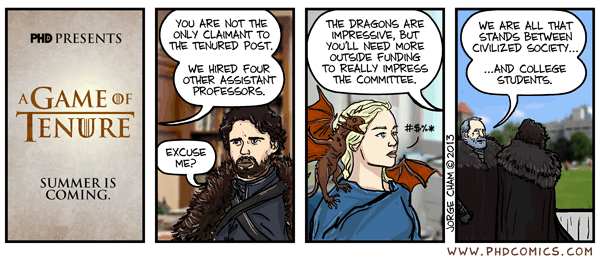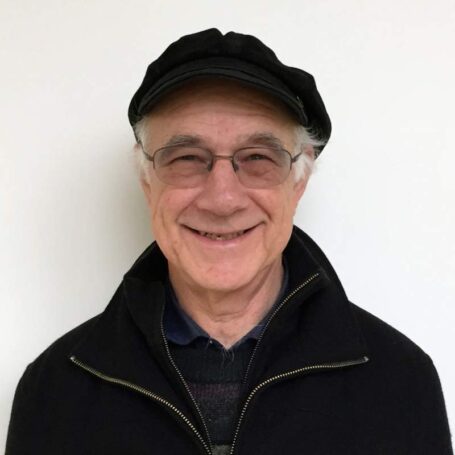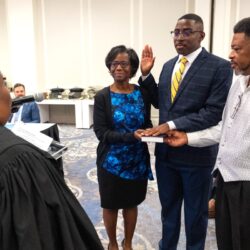Preserving Academic Freedom When Tenure Is Tenuous
Sitting here in Madison, Wisconsin, a chancellor of two UW institutions, I find myself at the vortex of an enormous national conversation about tenure and shared governance.
After decades of being enshrined in Wisconsin state law and often seen as the national gold standard for tenure protection, tenure policy in Wisconsin will now instead be covered by a policy (item #12) approved by the UW Board of Regents (18 individuals, mostly appointed by the governor who oversees the UW system).
Essentially, when the budget is signed, tenure at UW will move from law to policy, a move some perceive as a weakening of tenure in Wisconsin. Three months ago, anticipating legislative action, the Board of Regents passed a resolution confirming its commitment to tenure.
Despite this action, many here still see this change in law as an erosion of tenure. This perception is reinforced by a new state law that could also include much broader provisions (item #39) for layoff of tenured faculty beyond extreme financial emergency.
For many, the tenure conversation zeros in on the “employment protection” component of tenure, when another component – academic freedom – should, I would argue, be more important to us.

This article by Cathy Sandeen originally appeared at The Conversation, a Social Science Space partner site, under the title “Wisconsin controversy: with fewer tenured positions, who benefits from academic freedom?”
Protecting new ideas
Academic freedom allows faculty to teach, research and publish free of political, commercial and other influences. As the American Association of University Professors (AAUP) says: “the common good depends upon the free search for truth and its free exposition” and has been with us since 1915.
Though the purpose of tenure is academic freedom, employment protection comes into play because academic freedom exists only if faculty can perform their teaching, research, and shared governance duties free of threats of dismissal.
As we know, new developments, new thinking and new knowledge are often uncomfortable, unpopular and controversial.
Today, think of stem cell research, climate change or the competing interpretations of urban poor, to name a few. Theater productions and artwork created by faculty could also challenge prevailing views.
Academic freedom provides protection to these ideas. It is a pillar of U.S. higher education, one that separates us from many other higher educational systems around the world.
However, as American higher education continues to adapt and respond to the demands and desires of today’s students, how do we continue to live the value of academic freedom in this new environment?
Growth of contingent ranks
Let’s look at the changes in the academic workforce.
Over the last four decades, the composition of faculty in the U.S. has flipped. From primarily full-time tenured or tenure-track faculty (78.3 percent in 1969), higher education institutions have moved to mostly adjunct or “contingent” faculty – those without tenure, who work on limited term agreements (66.5 percent in 2009).
The main reason for this shift is economic.
Salaries and benefits constitute 80 percent of expenses within colleges and universities. And as institutions become increasingly tuition-dependent and face pressure from students, families and elected officials to focus on affordability and student debt, managing expenses becomes key.
Contingent faculty are paid at a lower rate and receive few or no benefits, providing a high level of flexibility to administrators as they confront the ebb and flow of student enrollments and course demands. Contingent faculty are more likely to teach lower-level courses that tenured faculty do not care to teach (e.g., basic writing and math).
The growth of for-profit institutions as well as the growth of self-supporting degree programs that cover their own cost within public institutions has also contributed to this trend.
Rather than being seen as highly educated, independent professionals, contingent faculty operate on a spectrum of independence. The most extreme end of the spectrum considers them performers of a curriculum developed by other experts.
Evolving faculty roles
In addition, we’re also hearing a lot these days about the disaggregation of the faculty role.
This means breaking down the teaching portion of faculty work into smaller and discrete activities, like developing course outlines, defining specific outcomes students should master, identifying readings and course materials, creating exercises and exams, lecturing, mentoring students, and evaluating student performance.
Part of what’s influencing this shift is the growth of online programs with technology platforms that allow us to gather more and more data about student learning behaviors and student learning outcomes.
Now we can isolate the different components involved in teaching and can change specific activities and techniques in ways that improve student learning.
Some institutions have addressed this head-on, breaking down faculty roles into smaller parts and hiring different kinds of individuals to carry out different teaching functions. These individuals typically are not tenured or tenure-track faculty and therefore have little or no assurance of academic freedom.
This shift in teaching roles and increasing reliance on non-faculty academics has occurred under the radar. Today we have a tiered structure of faculty, with some carrying out different functions and rewarded with different employment protections and different levels of academic freedom.
Academic freedom going forward
As we continue to evolve, how do we ensure that academic freedom remains alive and well for all faculty, regardless of whether they are headed for tenure or performing the traditional role of faculty inside and outside of the classroom?
The fact is that U.S. higher education is being compelled by internal and external forces to change. We need to recognize we have many different categories of faculty now, not all of whom may pursue or receive tenure.
At Wisconsin, we believe that academic freedom is such a core tenet of what we do that these protections are extended to all faculty, whether they are eligible for tenure or teaching one class a year on a contingent basis.
This protection is covered by system policy for academic staff (academic staff is our name for part-time or non-tenured instructors).
While it’s common for colleges and universities to reinforce academic freedom for tenured and tenure-track faculty, it is less common to see policy protection for other categories of faculty. I’m glad Wisconsin extends its academic freedom protection more widely across teaching staff, and I hope we’re applying that policy effectively.
In the dynamic and rapidly changing big-picture world of post-secondary education, the whole subject of tenure and academic freedom is more complex and nuanced than we may realize at first glance.
At Wisconsin, we believe that academic freedom is such a core tenet of what we do that these protections are extended to all faculty, whether they are eligible for tenure or teaching one class a year on a contingent basis
Let’s be honest here
Do I believe we need tenure as historically defined? Absolutely, yes. We would not have a higher education system that still is the envy of the world without it.
Faculty are the heart and soul of an institution. They make a lifetime commitment to an institution, while students and administrators come and go. For those who are more economically motivated, big donors to colleges and universities often mention favorite faculty as motivation for making their large gifts. There is no doubt tenure retains faculty and contributes to these benefits.
With so many of our teachers and instructors ineligible for tenure, is there more we need to do to provide some level of employment security – and, more importantly, to define and extend academic freedom beyond the tenured ranks?
I am proud to be affiliated with a great university that has, for decades, committed itself to live by the values of academic freedom enshrined by these words on all our campuses: “Whatever may be the limitations which trammel inquiry elsewhere, we believe that the great State University of Wisconsin should ever encourage that continual and fearless sifting and winnowing by which alone the truth may be found.”
Perhaps it’s time for higher education to do its own “sifting and winnowing” by looking more closely at our tiered faculty structure, in which some faculty enjoy tenure and the majority do not. We need to be more deliberate and honest about how academic freedom applies to different teaching roles within this new environment.![]()




























































































